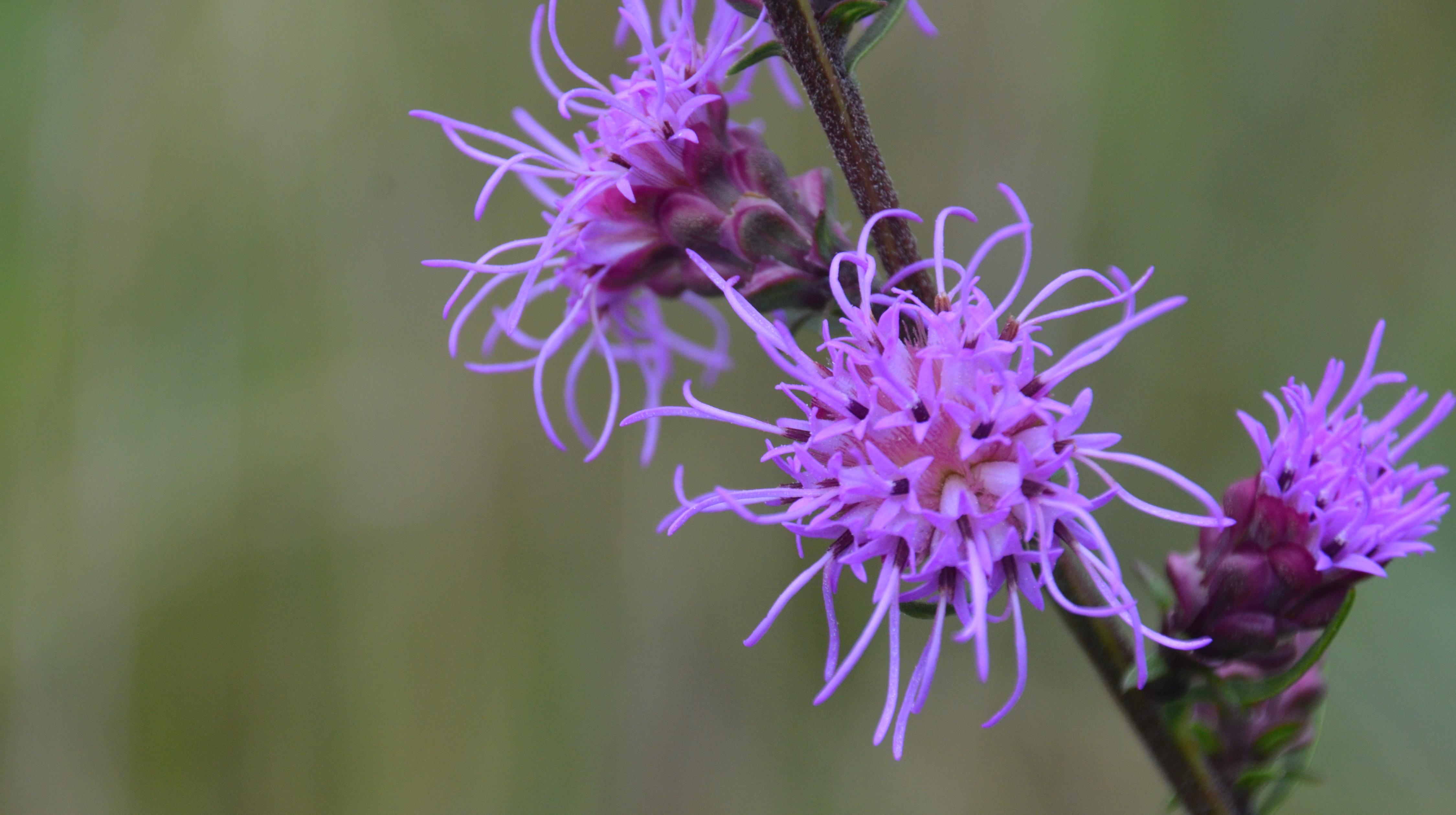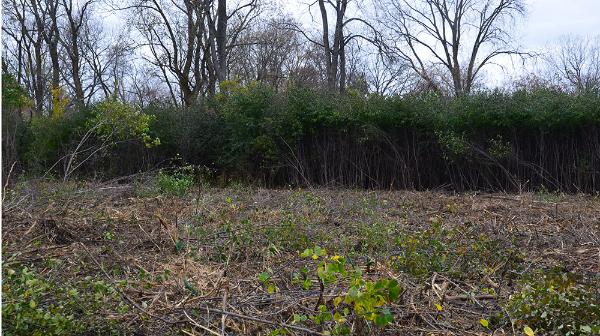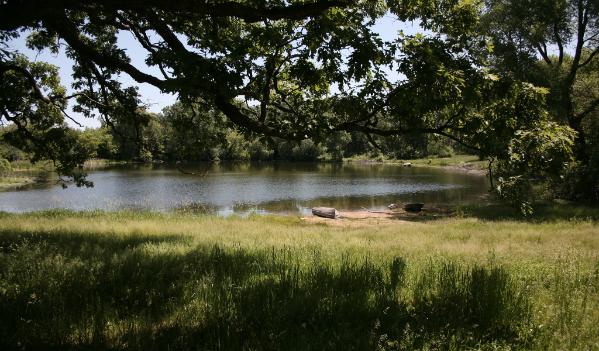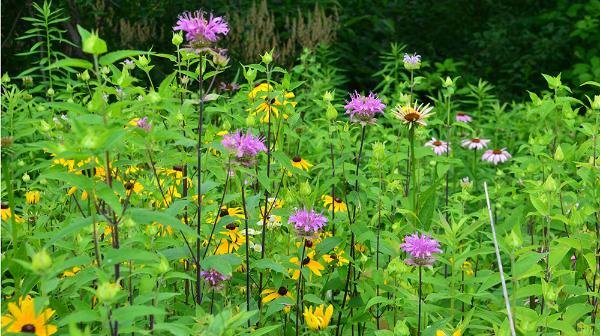Ecological Restoration

We do restoration "because there is something badly off-kilter in our relationship with the rest of the natural world, and ecological restoration offers unique and refreshing perspectives for setting that relationship on a better course."
Paddy Wordworth, 2014 – Our Once and Future Planet
By engaging in ecological restoration, Loyola is working to educate the wider Loyola community, and the campus's neighbors about the importance of developing a relationship with our natural surroundings. Loyola offers ecological courses and internships based at the campus, and holds monthly volunteer Restoration Work Days open to all Loyolans and the public.
Restoration at LUREC focuses on two sensitive ecological areas on the Retreat and Ecology Campus property: a wetland basin on the east end of the property and a surrounding oak woodland. The following efforts are underway to restore these areas:
Invasive brush clearing: buckthorn and honeysuckle removal

By removing small invasive trees and brush from the surrounding woodland, the area will become much more open, and the majestic oaks will be more visible, balanced with an understory of native shrubs, small trees, and herbaceous plants.
Monitoring of water flow to and from artificial pond

Currently, the campus features an artificial pond that, due to poor construction, has a failing berm on one side. Its outflow causes significant erosion. Loyola will work to decommission the pond and rehydrate the surrounding wetlands, transforming the area back into a complex wetland habitat that will support native grasses, sedges, forbs, and shrubs. The pond area will retain some open water.
Seed collection and planting of native species

In each of the ecosystems at LUREC, a resilient seed bank waits for the chance to flourish again. Following the removal of dominant invasive plants, they are given this chance. Collection and redistribution of the native seeds from grasses and flowers can significant aid the recovery of an area. The restored prairie at the west end of the property is a very successful example of this process.
Through these efforts, Loyola will promote the biodiversity of native organisms and control invasive species, so that these areas may help sustain the broader natural ecosystems of McHenry County and of the newly established Hackmatack National Wildlife Refuge.


